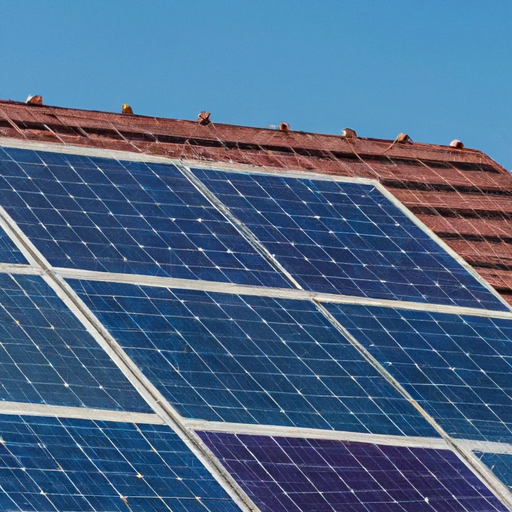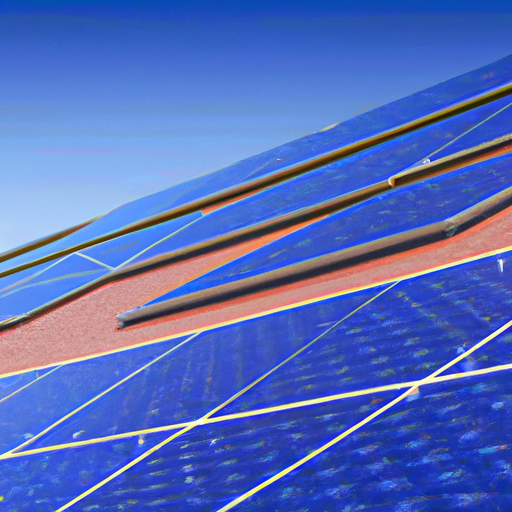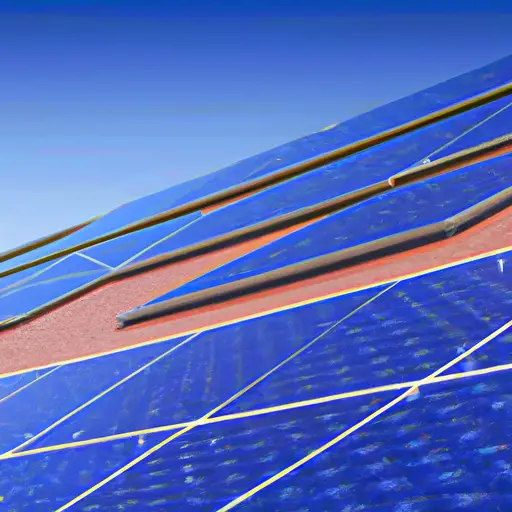So, you’re thinking about installing solar panels, huh? That’s a great idea! Not only will it help you save money on your electricity bill, but it’s also a step towards a more sustainable lifestyle. But let me tell you, installing solar panels is not as simple as just sticking them on your roof and calling it a day. There are a few common mistakes that people often make when installing solar panels, and I’m here to tell you all about them.
One of the biggest mistakes people make when installing solar panels is not considering their location. Sure, you might have a nice, sunny spot on your roof, but is it really the best place to put your panels? You see, solar panels need as much sunlight as possible, so if your roof is shaded by trees or other obstructions for most of the day, you’re not going to get the maximum benefit from your panels. It’s important to carefully assess your property and choose the best location for maximum sun exposure.
Another mistake people often make is installing their panels without consulting a professional. Sure, watching a few DIY videos on the internet might make it seem like a piece of cake, but trust me, it’s not. Installing solar panels involves electrical work, which can be dangerous if you don’t know what you’re doing. It’s always a good idea to hire a professional installer who can ensure that everything is done correctly and safely.
Lastly, many people forget to consider the angle and orientation of their panels. The angle at which your panels are installed can greatly affect their efficiency. If they are tilted too far forward or too far backward, they won’t be able to capture as much sunlight. Similarly, the orientation of your panels is important. They should ideally face south to maximize sun exposure throughout the day. These are all important factors that you need to consider when installing solar panels.
Now that you know some of the common mistakes when installing solar panels, you’re better equipped to make informed decisions. But there’s still a lot more to learn! In our upcoming article, we’ll dive deeper into the technicalities of solar panels and provide you with even more tips and tricks to ensure a successful installation. So stay tuned and get ready to harness the power of the sun!

Common Mistakes When Installing Solar Panels
Installing solar panels can be an exciting and sustainable addition to your home. With the rising cost of electricity and the increasing concern for the environment, many homeowners are turning towards solar energy to power their homes. However, there are several common mistakes that people make when installing solar panels. In this article, we will discuss these mistakes and provide tips on how to avoid them.
Misunderstanding the Off-Grid Lifestyle
One common mistake that many homeowners make is misunderstanding the off-grid lifestyle. While the idea of living off the grid and being completely self-sufficient may be appealing to some, it is important to understand that solar panels alone may not be enough to sustain your energy needs. If you are planning to disconnect from the main power grid, you will need to consider other factors such as battery storage and backup generators to ensure a constant power supply.
Choosing the Wrong Location
Choosing the right location for your solar panels is crucial to ensure optimal performance. One of the most common mistakes is placing the panels in an area that does not receive enough sunlight. To avoid this mistake, you should carefully consider the orientation and tilt of your solar panels. They should be positioned to face true south (in the northern hemisphere) or true north (in the southern hemisphere) to maximize sun exposure throughout the day.
Neglecting Proper Sun Exposure
Proper sun exposure is essential for solar panels to generate electricity efficiently. It is important to assess your property’s exposure to sunlight throughout the year and avoid any obstructions that may cast shadows on your panels. Trees, buildings, and even nearby structures can affect the sunlight reaching your panels, reducing their efficiency. Regularly monitoring your panels’ sun exposure and trimming any interfering trees or plants can help ensure optimal performance.
Improper Installation Angle
The angle at which you install your solar panels plays a significant role in their energy production. Ideally, the angle should be optimized to match your location’s latitude to capture the most direct sunlight. However, many homeowners fail to install their panels at the correct angle, resulting in decreased efficiency. To avoid this mistake, it is recommended to consult with a professional installer or use online tools that calculate the optimal tilt angle based on your latitude.
Ignoring Potential Shade Sources
In addition to considering the overall sun exposure, it is important to identify and account for potential shade sources near your solar panels. Shade from nearby structures, trees, or chimneys can significantly reduce the output of your panels. It is crucial to evaluate the shade patterns throughout the day and year to determine the best location for your panels. By locating them in shade-free areas, you can maximize their energy production.
Underestimating Energy Needs
Another common mistake when installing solar panels is underestimating your energy needs. It is important to calculate your household’s energy consumption accurately to determine the number of panels required. Factors such as the number of occupants, appliances, and lifestyle choices all impact your energy consumption. By understanding your energy needs, you can install an adequate system that meets your requirements.
Using Inefficient or Mismatched Components
Using inefficient or mismatched components is a common mistake that can result in underperforming solar panels. It is essential to select high-quality components that are compatible with one another. Mismatched components can lead to decreased performance and potentially damage your panels. Researching and consulting with professionals can help you choose the right components for your specific needs and ensure a well-functioning solar system.
Neglecting Maintenance and Cleaning
Once your solar panels are installed, it is important not to neglect their maintenance and cleaning. Over time, dust, dirt, and debris can accumulate on the panels’ surface, reducing their efficiency. Regular inspections and cleaning are necessary to maintain optimal performance. Additionally, monitoring for any signs of damage or wear can help identify and address potential issues before they escalate.
Skipping Permits and Regulations
Installing solar panels without obtaining the necessary permits and complying with local regulations is a common mistake that can lead to legal and financial consequences. Before installing solar panels, it is essential to check with your local authorities to determine the requirements for permits and approvals. Skipping this step can result in fines, delays, or having to remove the panels altogether.
Failing to Hire a Professional Installer
While DIY solar panel installation may seem like a cost-effective option, it can often lead to costly mistakes and safety hazards. Hiring a professional installer with experience and expertise in solar installation is highly recommended. They have the knowledge to address the technical aspects and ensure that your system is installed correctly and safely. Moreover, professional installers can guide you through the whole process, from system design to maintenance, maximizing the benefits of your solar panels.
In conclusion, installing solar panels is a great step towards sustainable energy and reducing your environmental footprint. However, it is important to avoid common mistakes that can affect the performance and efficiency of your panels. By understanding the off-grid lifestyle, choosing the right location, ensuring proper sun exposure, installing at the correct angle, considering potential shade sources, accurately estimating energy needs, using efficient components, maintaining and cleaning the panels, obtaining permits, and hiring a professional installer; you can enjoy the full benefits of solar energy for your home.





